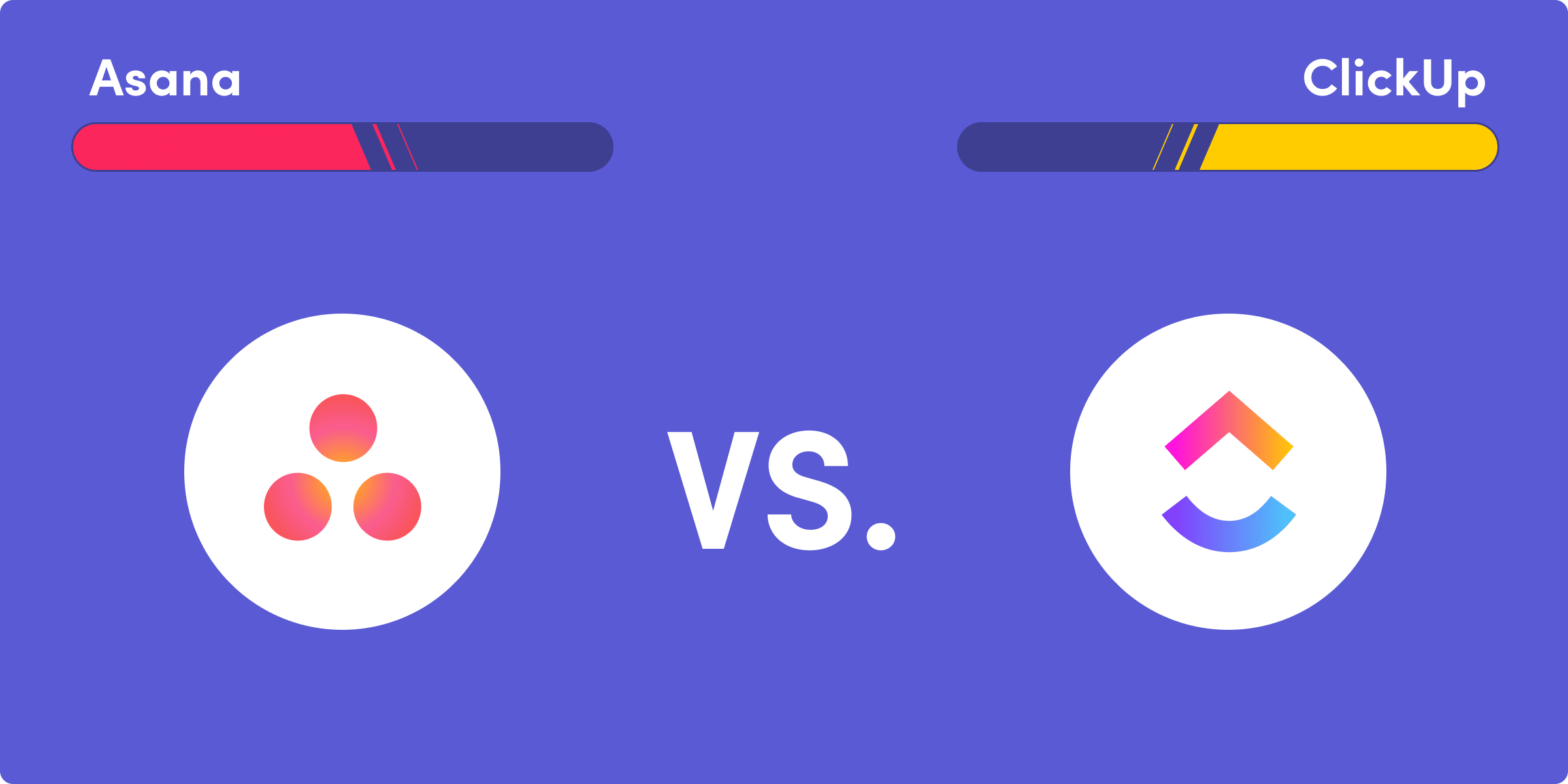In the fast-paced world of project management, choosing the right tool can make all the difference. ClickUp and Asana are two of the most popular project management tools available today, each with its own unique features and benefits. In this comprehensive review, we’ll compare ClickUp and Asana across various parameters to help you determine which one is the best fit for your team in 2024.
1. Overview of ClickUp and Asana
ClickUp
ClickUp is an all-in-one project management platform designed to replace multiple tools and streamline workflow. It offers a wide range of features including task management, time tracking, goal setting, and collaboration tools. ClickUp’s flexibility and customization options make it suitable for teams of all sizes and industries.
Asana
Asana is a widely used project management tool known for its intuitive interface and robust task management capabilities. It focuses on helping teams organize, track, and manage their work. Asana’s strengths lie in its simplicity and ease of use, making it a favorite among small to medium-sized teams.
2. Key Features Comparison
Task Management
ClickUp:
- Hierarchical task structure (Tasks, Subtasks, Checklists)
- Custom statuses and workflows
- Time tracking and estimates
- Multiple views (List, Board, Box, Calendar, Gantt)
Asana:
- Task assignments and due dates
- Customizable task fields
- Recurring tasks and deadlines
- Multiple views (List, Board, Calendar, Timeline)
Collaboration
ClickUp:
- Real-time collaboration and editing
- Comments, mentions, and notifications
- Integrated chat and email
- Docs and wikis for knowledge sharing
Asana:
- Task comments and attachments
- Project conversations and updates
- Integrations with Slack, Microsoft Teams, and more
- Project brief and status updates
Integrations
ClickUp:
- Extensive integrations with tools like Slack, Google Drive, and GitHub
- API for custom integrations
- Native automation and Zapier support
Asana:
- Integrations with over 100 apps including Google Workspace, Microsoft Office, and Zapier
- Custom API for advanced integrations
- Native workflow automation
Pricing
ClickUp:
- Free plan with unlimited tasks and users
- Paid plans start at $5 per user/month
Asana:
- Free plan with basic features for up to 15 users
- Paid plans start at $10.99 per user/month
3. User Experience
ClickUp
ClickUp offers a high level of customization, allowing users to tailor the platform to their specific needs. However, this flexibility can come with a steeper learning curve. The interface is feature-rich, which might be overwhelming for new users but powerful for experienced teams.
Asana
Asana’s interface is clean and intuitive, making it easy for users to get started quickly. The focus on simplicity ensures that teams can adopt the tool without extensive training. However, some users may find it lacks the depth of customization available in ClickUp.
4. Customer Support
ClickUp
ClickUp provides 24/7 customer support via chat and email, along with a comprehensive knowledge base and video tutorials. They also offer a community forum for peer support and feedback.
Asana
Asana offers support through email and a detailed help center with guides and tutorials. For premium users, priority support is available, including personalized training sessions.
5. Final Verdict
Both ClickUp and Asana are excellent project management tools, each with its own set of strengths. ClickUp is ideal for teams that require a high level of customization and a wide range of features. It’s particularly suitable for larger teams or those with complex workflows. On the other hand, Asana is perfect for teams that prioritize ease of use and straightforward task management. Its simplicity and intuitive design make it a great choice for smaller teams or those new to project management software.
Ultimately, the best choice depends on your team’s specific needs and workflow. Consider taking advantage of the free plans offered by both tools to test them out and see which one fits your team’s working style the best.




